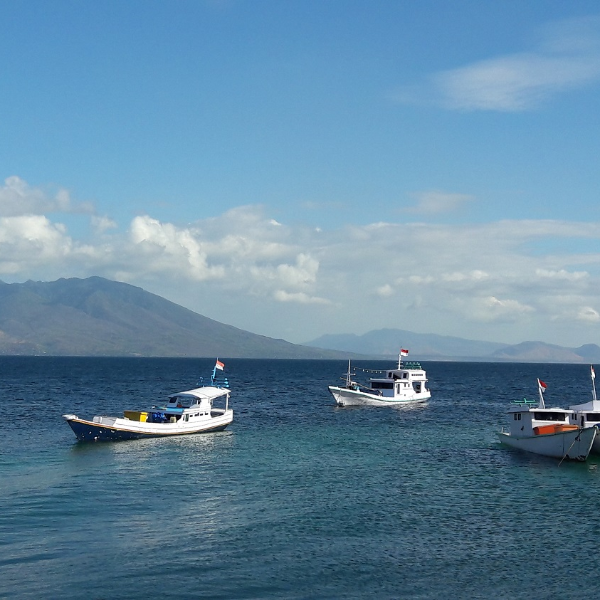Environmental and Social Impact Assessment for Tidal Bridge in East Flores

Environmental and Social Impact Assessment for Tidal Bridge in East Flores
Residents on the Indonesian island of Adonara currently cross the dangerous Larantuka Strait on small ferries. These ferries only operate during the daytime, cannot transport cars, and are capable of carrying only a small amount of cargo. This poor connection affects the social and economic development of the island, and for years both residents and the regional government have been calling for a bridge. Added to this, the island’s power supply is inadequate and power cuts are frequent, which also impacts negatively on the local economy.
To address these issues, Dutch consortium Tidal Bridge BV has developed a plan for a bridge across the Larantuka Strait which incorporates tidal turbines. These turbines are intended to replace the two diesel-fuelled generators that currently power the island, meaning the proposed bridge will solve the island’s transport and power issues in one fell swoop. With a capacity of 40 MW, the bridge’s tidal turbines will be the largest in the world. The bridge itself will be the first structure to combine a bridge with tidal power. The project is being financed by the entrepreneurial bank FMO and the Indonesian state electricity supplier PLN.
Since 2019 Witteveen+Bos has provided a wide range of technical, environmental and planning support to Tidal Bridge. This has included developing work plans, assisting with project planning, and providing contract support and engineering advice. Witteveen+Bos also – in collaboration with project partner Bita Bina Semesta – performed an Environmental and Social Impact Assessment (ESIA), applying IFC Performance Standards. The purpose of this ESIA was to allow FMO and Tidal Bridge to understand the social and environmental impacts of the bridge and its turbines and to assess the available options to reduce them. The ESIA focused on environmental and socioeconomic impact, the overall socioeconomic benefits and impact on Adonara island, and the biodiversity risks in the Larantuka Strait. The study was completed in 2021.
Although the tidal bridge will be of significant social and economic significance to this poor region of Indonesia, the plan also has its drawbacks. For one, the bridge is going to be built in an area where whales are occasionally sighted and endangered turtle species nest. A design that takes these facts into account is necessary, therefore, to prevent negative consequences for biodiversity. On top of this, the operators of the ferries which currently service the island will lose their livelihoods once the bridge has been completed, and the relocation of some residents and businesses will be required to allow for wider access roads. Witteveen+Bos has identified the communities and businesses that will be affected and provided a land acquisition and relocation framework plan – based on IFC Performance Standards – for restoring their livelihoods.
Following completion of the ESIA, Witteveen+Bos continued supporting Tidal Bridge by providing technical and project management advice and preparing work plans for the next engineering phase; the Front-End Engineering Design (FEED). Tidal Bridge has asked Witteveen+Bos to lead the design process during this important phase, in which the project’s design will be developed in more detail and put out to tender for construction. The FEED phase is expected to start at the end of 2023.
More information?
